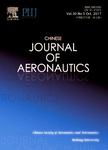Numerical analysis and optimization of boundary layer suction on airfoils
Numerical analysis and optimization of boundary layer suction on airfoils作者机构:School of Aerodynamics Northwestern Polytechnical University Chinese Aeronautical Establishment
出 版 物:《Chinese Journal of Aeronautics》 (中国航空学报(英文版))
年 卷 期:2015年第28卷第2期
页 面:357-367页
核心收录:
学科分类:080103[工学-流体力学] 08[工学] 080104[工学-工程力学] 0802[工学-机械工程] 0825[工学-航空宇航科学与技术] 0801[工学-力学(可授工学、理学学位)]
基 金:supported by the National Basic Research Program of China (No. 2014CB744804)
主 题:Active control Hybrid laminar flow control(HLFC) Neural network Optimization Radial basis function (RBF)Transition prediction
摘 要:Numerical approach of hybrid laminar flow control (HLFC) is investigated for the suc- tion hole with a width between 0.5 mm and 7 mm. The accuracy of Menter and Langtry's transition model applied for simulating the flow with boundary layer suction is validated. The experiment data are compared with the computational results. The solutions show that this transition model can pre- dict the transition position with suction control accurately. A well designed laminar airfoil is selected in the present research. For suction control with a single hole, the physical mechanism of suction control, including the impact of suction coefficient and the width and position of the suc- tion hole on control results, is analyzed. The single hole simulation results indicate that it is favor- able for transition delay and drag reduction to increase the suction coefficient and set the hole position closer to the trailing edge properly. The modified radial basis function (RBF) neural net- work and the modified differential evolution algorithm are used to optimize the design for suction control with three holes. The design variables are suction coefficient, hole width, hole position and hole spacing. The optimization target is to obtain the minimum drag coefficient. After optimization, the transition delay can be up to 17% and the aerodynamic drag coefficient can decrease by 12.1%.



